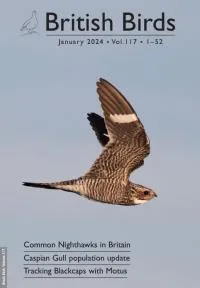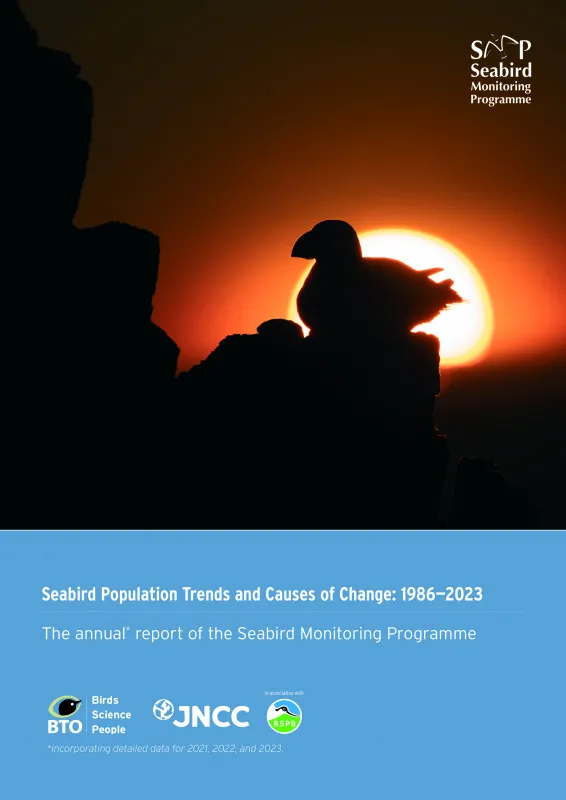Storm Petrel

Introduction
This small petrel, not much larger than a House Martin and very similar in appearance, is extremely pelagic, spending most of its life at sea.
The Storm Petrel only comes to land during the summer months, making its breeding attempts on offshore islands and a few isolated headlands. Although it has an estimated breeding population in the UK of around 30,000 pairs, this is an extremely difficult species to see during the breeding season, only coming to land during the hours of darkness often staying at sea on bright moonlit nights.
Several Storm Petrel breeding colonies have been the subject of detailed study, with ringing data demonstrating that this is a long-lived bird, with some individuals living for over 30 years.

Key Stats
Identification
ID Videos
This section features BTO training videos headlining this species, or featuring it as a potential confusion species.
Petrels
Songs and Calls
Song:
Call:
Status and Trends
Conservation Status
Population Change
Storm Petrels are pelagic and nest underground, hence they are difficult to survey and the first reliable population estimates were made during the 1998–2002 Census (Seabird 2000) when tape-playback techniques were available to count occupied burrows. Until the results of the Seabirds Count (2015–2021) have been published the recent trend of the species is uncertain, although data available from some colonies suggest numbers have increased, including a doubling of the population at the largest colony on Mousa (JNCC 2022)
Distribution
Storm Petrels breed on remote, small, rat-free, offshore islands on the Atlantic fringe of north and west Britain and Ireland from Shetland to Borhou in the Channel Islands. During the winter period of Bird Atlas 2007–11 they were recorded from 50 10-km squares, mostly along the North Sea coast and off southwest England.
Occupied 10-km squares in UK
or view it on Bird Atlas Mapstore.
or view it on Bird Atlas Mapstore.
European Distribution Map
Distribution Change
Change in occupied 10-km squares in the UK
or view it on Bird Atlas Mapstore.
or view it on Bird Atlas Mapstore.
Seasonality
Storm Petrel is a localised breeder present during the breeding season and recorded occasionally during autumn seawatching.
Weekly pattern of occurrence
The graph shows when the species is present in the UK, with taller bars indicating a higher likelihood of encountering the species in appropriate regions and habitats.

Movement
Britain & Ireland movement
Foreign locations of birds ringed or recovered in Britain & Ireland
Dots show the foreign destinations of birds ringed in Britain & Ireland, and the origins of birds ringed overseas that were subsequently recaptured, resighted or found dead in Britain & Ireland. Dot colours indicate the time of year that the species was present at the location.
- Winter (Nov-Feb)
- Spring (Mar-Apr)
- Summer (May-Jul)
- Autumn (Aug-Oct)

European movements
EuroBirdPortal uses birdwatcher's records, such as those logged in BirdTrack to map the flows of birds as they arrive and depart Europe. See maps for this species here.
The Eurasian-African Migration Atlas shows movements of individual birds ringed or recovered in Europe. See maps for this species here.
Biology
Productivity and Nesting
Nesting timing
Egg measurements
Clutch Size
Survival and Longevity
Survival is shown as the proportion of birds surviving from one year to the next and is derived from bird ringing data. It can also be used to estimate how long birds typically live.
View number ringed each year in the Online Ringing Report.
lifespan
Survival of adults
Biometrics
Wing length and body weights are from live birds (source).
Wing length
Body weight
Ring Size
Classification, names and codes
Classification and Codes
- Order: Procellariiformes
- Family: Hydrobatidae
- Scientific name: Hydrobates pelagicus
- Authority: Linnaeus, 1758
- BTO 2-letter code: TM
- BTO 5-letter code: STOPE
- Euring code number: 520
Alternate species names
- Catalan: ocell de tempesta comú
- Czech: burnácek malý
- Danish: Lille Stormsvale
- Dutch: Stormvogeltje
- Estonian: atlandi tormipääsu
- Finnish: merikeiju
- French: Océanite tempête
- Gaelic: Annlag-fairge
- German: Sturmschwalbe
- Hungarian: viharfecske
- Icelandic: Stormsvala
- Irish: Guairdeall
- Italian: Uccello delle tempeste
- Latvian: Eiropas vetrasburatajs
- Lithuanian: bukauodegis audrašauklis
- Norwegian: Havsvale
- Polish: nawalnik burzowy
- Portuguese: alma-de-mestre
- Slovak: víchrovnícek morský
- Slovenian: strakoš
- Spanish: Paíño europeo
- Swedish: stormsvala
- Welsh: Pedryn Drycin
- English folkname(s): Little Peter
Research
Causes of Change and Solutions
Causes of change
The trend is uncertain and hence further research is needed to understand potential drivers of population change.
Publications (2)
The status of the UK’s breeding seabirds
Author: Stanbury, A.J., Burns, F., Aebischer, N.J., Baker, H., Balmer, D., Brown, A.F., Dunn, T., Lindley, P., Murphy, M., Noble, D.G., Owens, R. & Quinn, L.
Published: 2024
Five seabird species are added to the Birds of Conservation Concern Red List in this addendum to the 2021 update, bringing the total number of Red-listed seabird species to 10, up from six since seabirds were last assessed. The Amber List of seabirds moves from 19 to 14 species, and the Green List increases from one to two species.
29.09.24
Papers

Seabird Population Trends and Causes of Change: 1986–2023
Author: Harris, S.J., Baker, H., Balmer, D.E., Bolton, M., Burton, N.H.K., Caulfield, E., Clarke, J.A.E., Dunn, T.E., Evans, T.J., Hereward, H.R.F., Humphreys, E.M., Money, S. and O’Hanlon, N.J.
Published: 2024
This report presents the latest seabird population trends in breeding abundance and productivity using data from the Seabird Monitoring Programme (SMP).The report documents changes in the abundance and productivity of breeding seabird species in Britain and Ireland from 1986 to 2023, and provides a detailed account of the 2021, 2022 and 2023 breeding seasons.This report includes both inland and coastal populations and trends from the Channel Islands, England, Isle of Man, Northern Ireland, Scotland, Wales and the Republic of Ireland, which are presented where sufficient data are available. The results from this report are used more broadly to assess the health of the wider environment, to inform policy and for conservation action.
21.11.24
Reports Research reports


